Fix Problems with MacOS 10.13 High Sierra Update
Apple releases the macOS 10.13 High Sierra for all Mac users on its 10 anniversary at WWDC 2017. The Mac software update is available and recommended for all users to download for its new features and improved performance. This guide will show you how to get macOS 10.13 High Sierra update on Mac computer and help you solve any macOS 10.13 High Sierra upgrade problems, including macOS High Sierra problems with upgrade frozen, stuck or slow install, Mac won’t boot after macOS High Sierra installation, macOS 10.13 High Sierra issues with frequent logout etc.
Updated: Office app incompatibility – according to recent reports, users updating to macOS High Sierra are experiencing Office app problems with macOS 10.13 High Sierra. It is said that Office 2016 for Mac earlier than 15.34 (15.34 incl.) are not supported on the latest macOS. All users are suggested to update the app to version later than 15.35 but it can’t gurantee no problems on macOS High Sierra. Besides that, Office for Mac 2011 will not work after users update to macOS High Sierra. Before you run the app, you should back up your data.
1. macOS 10.13 issues with stuck/frozen download
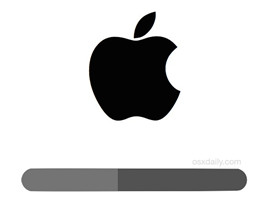 “The macOS 10.13 download goes smoothly for the first 2GB and then it stuck and stopped and i got an error saying that macOS High Sierra download has failed…” This is one fo the common problems with macOS High Sierra 10.13 or earlier version update. The macOS High Sierra upgrade frozen problems happen most often during the download peak, try to:
“The macOS 10.13 download goes smoothly for the first 2GB and then it stuck and stopped and i got an error saying that macOS High Sierra download has failed…” This is one fo the common problems with macOS High Sierra 10.13 or earlier version update. The macOS High Sierra upgrade frozen problems happen most often during the download peak, try to:
* It may be caused by overloaded servers, try later to avoid other heavy internet traffic activities and macOS 10.13 High Sierra udpate issues; switch WiFi to internet cable.
* Delete half-downloaded macOS 10.13 files and half-cooked “Install macOS 10.13” file from Launchpad , reboot Mac and redownload.
* Go to Store, View My Account and check the “Unfinished Downloads”.
* Go to Store and sign out your account and it may continue download.
* Delete half-downloaded macOS 10.13 files and half-cooked “Install macOS 10.13” file from Launchpad , reboot Mac and redownload.
* Go to Store, View My Account and check the “Unfinished Downloads”.
* Go to Store and sign out your account and it may continue download.
2. macOS High Sierra issues: downloaded but not installed
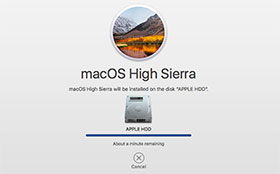 To finish macOS 10.13 update, users will go through downloading and installing two separate steps. “The macOS 10.13 is downloaded but there is no prompt to install it. Mac App Store says it’s downloaded but nothing further happens. One of the common macOS 10.13 High Sierra upgrade problems from macOS Sierra or El Capitan update ealier is that many users don’t know where the installer is:
To finish macOS 10.13 update, users will go through downloading and installing two separate steps. “The macOS 10.13 is downloaded but there is no prompt to install it. Mac App Store says it’s downloaded but nothing further happens. One of the common macOS 10.13 High Sierra upgrade problems from macOS Sierra or El Capitan update ealier is that many users don’t know where the installer is:
* Find the installer “Install macOS 10.13” in the application folder and double click it to start installation.
* The installer will be deleted automatically after installed.
* The installer will be deleted automatically after installed.
3. macOS 10.13 upgrading problems with no enough space
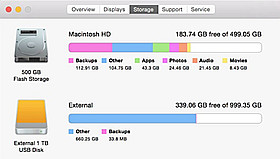 There are two major macOS 10.13 High Sierra problems with space: after users clearly delete or move files for enough space, it still reminds that there is not enough disk space available to update and install the software; users forget to leave enough space and get macOS High Sierra issues with stuck install page with no way to free up space:
There are two major macOS 10.13 High Sierra problems with space: after users clearly delete or move files for enough space, it still reminds that there is not enough disk space available to update and install the software; users forget to leave enough space and get macOS High Sierra issues with stuck install page with no way to free up space:
* If you have left enough space: a. check the hidden file Time Machine users for local backups; b. run sudo tmutil disablelocal in Terminal.
* Free up space when macOS 10.13 High Sierra upgrade frozen: enter into recover (CTL+R), select “Disk boot” and start the normal system. Then restart Sierra upgrade to macOS 10.13 after space clean.
* Free up space with TimeMachine or the macOS 10.13 updating helper.
* Free up space when macOS 10.13 High Sierra upgrade frozen: enter into recover (CTL+R), select “Disk boot” and start the normal system. Then restart Sierra upgrade to macOS 10.13 after space clean.
* Free up space with TimeMachine or the macOS 10.13 updating helper.

Backup Mac Data and Make Enough Room for macOS 10.13 Upgrade
MacX MediaTrans will backup computer files to hard drive by turning iPhone iPad into flash drive and transfer important data in one click, including music, videos, photos, apps any other data. Backup and restore Mac data by simply drag and drop.
4. macOS High Sierra install frozen/stuck problems
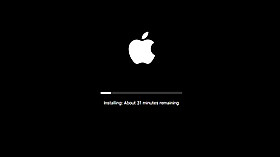 “MacOS High Sierra install stuck issues!!!! The install stuck at 5 minutes remaining and took a couple of hours but then said it was unable to install.” Quite many users failed to update to macOS 10.13 High Sierra from Sierra/earlier due to problems with macOS High Sierra install stuck or frozen. How to solve this macOS 10.13 High Sierra update issue:
“MacOS High Sierra install stuck issues!!!! The install stuck at 5 minutes remaining and took a couple of hours but then said it was unable to install.” Quite many users failed to update to macOS 10.13 High Sierra from Sierra/earlier due to problems with macOS High Sierra install stuck or frozen. How to solve this macOS 10.13 High Sierra update issue:
* Try cmd + opt + r and install the 10.13 over internet recovery.
* Enable the root user before installation, then disable it.
* Remove any antivirus software on Mac.
* Reboot Mac and install macOS 10.13 High Sierra in Safe Mode.
* Enable the root user before installation, then disable it.
* Remove any antivirus software on Mac.
* Reboot Mac and install macOS 10.13 High Sierra in Safe Mode.
5. Mac won’t start problems after macOS 10.13 High Sierra update
 When the macOS 10.13 install stalls, what’s next? Reboot the Mac. However, “My iMac won’t boot after macOS 10.13 upgrade. The macOS High Sierra problem continues and I’m tired of the white screen…” It’s really frustrating because this is the last step to finish upgrading Mac to macOS 10.13. But unfortunately it’s quite common to be unable to boot Mac after High Sierra upgrade, the good thing is that there are some solutions to macOS High Sierra problems with white screen:
When the macOS 10.13 install stalls, what’s next? Reboot the Mac. However, “My iMac won’t boot after macOS 10.13 upgrade. The macOS High Sierra problem continues and I’m tired of the white screen…” It’s really frustrating because this is the last step to finish upgrading Mac to macOS 10.13. But unfortunately it’s quite common to be unable to boot Mac after High Sierra upgrade, the good thing is that there are some solutions to macOS High Sierra problems with white screen:
* Safe boot your Mac.
* Reset the System Management Controller (SMC).
* Reset “non-volatile random-access memory” (NVRAM).
* Run Disk Utility in Recovery Mode to fix the macOS 10.13 High Sierra update issues.
* Reset the System Management Controller (SMC).
* Reset “non-volatile random-access memory” (NVRAM).
* Run Disk Utility in Recovery Mode to fix the macOS 10.13 High Sierra update issues.
6. macOS 10.13 logout problems after update
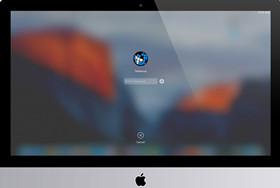 The upgraded macOS 10.13 High Sierra randomly logs out on Mac. For some users, the macOS 10.13 High Sierra issues happen like “After updating Mac to macOS 10.13 days before, my Mac keeps logging out for full-screen when I watch videos in Chrome”, for some others, “The update to macOS High Sierra 10.13 my MacBook Air logs off randomly when I am watching something online or working in a Word Document, in full screen”:
The upgraded macOS 10.13 High Sierra randomly logs out on Mac. For some users, the macOS 10.13 High Sierra issues happen like “After updating Mac to macOS 10.13 days before, my Mac keeps logging out for full-screen when I watch videos in Chrome”, for some others, “The update to macOS High Sierra 10.13 my MacBook Air logs off randomly when I am watching something online or working in a Word Document, in full screen”:
* Go to System Preferences> Security & Privacy> click Advanced and uncheck the box Log out after … minutes of inactivity.
* Security & Privacy > General, uncheck the box “Require password [immediately] after sleep or screen saver begins.
* Turn hardware acceleration off in Chrome’s advanced settings.
* If macOS High Sierra crashes to login screen, delete file ˜Library/Preferences/com.apple.universalaccess.plist and then reboot.
* Security & Privacy > General, uncheck the box “Require password [immediately] after sleep or screen saver begins.
* Turn hardware acceleration off in Chrome’s advanced settings.
* If macOS High Sierra crashes to login screen, delete file ˜Library/Preferences/com.apple.universalaccess.plist and then reboot.


Comments
Post a Comment